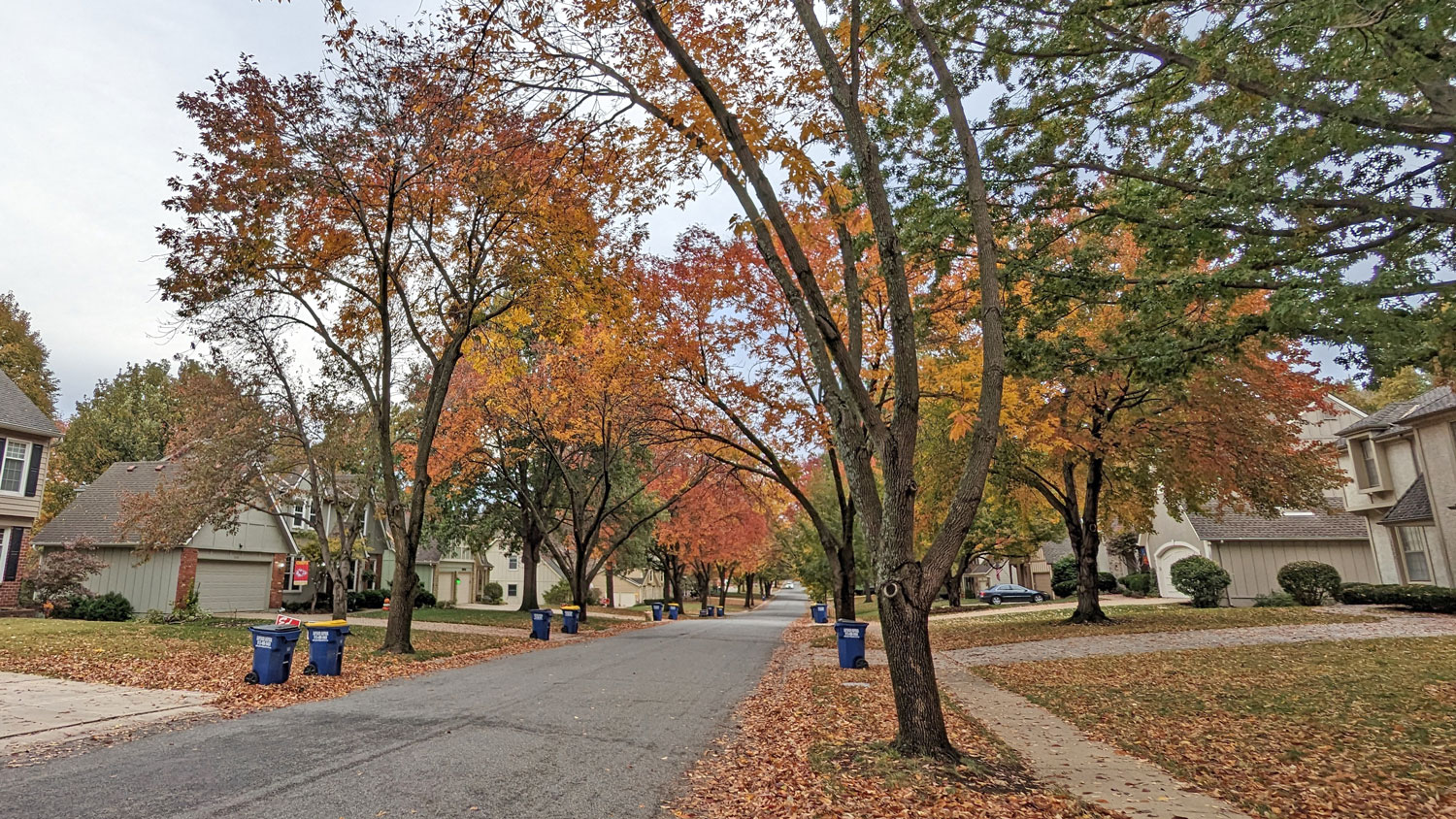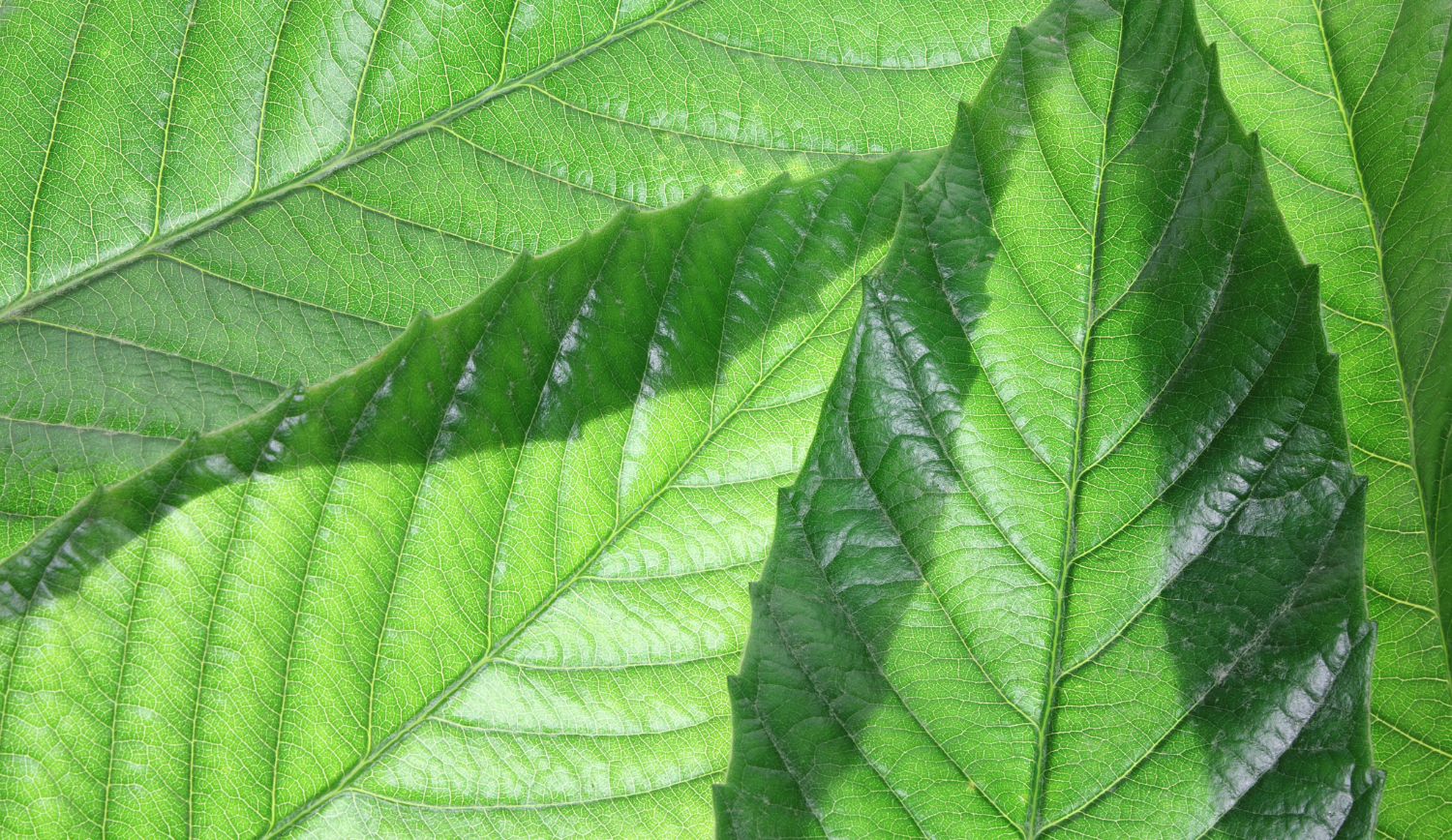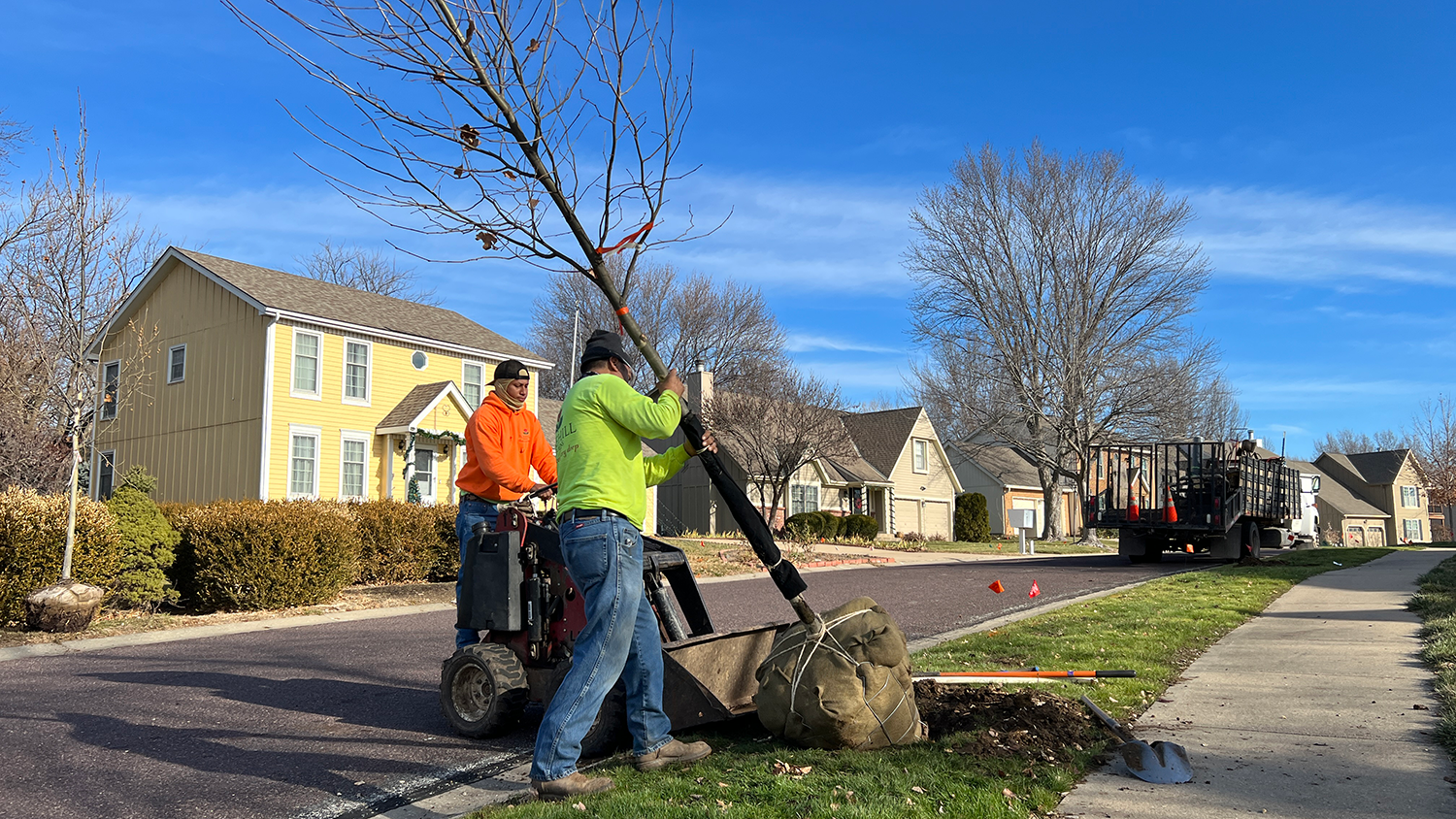Ash Tree Removal Program
Ash Tree Removal Program
In 2014, approximately 11,000 ash street trees made up nearly a quarter of the city’s street tree canopy.
The emerald ash borer, an invasive beetle that feeds specifically on ash species, will kill the vast majority of those trees.
Before 2023, City forestry staff had been removing ash street trees upon request. Staff has removed approximately 3,000 dead or dying ash trees at the rate of about 500 trees per year. Without a large-scale removal program, it would take the City more than 15 years to remove all the remaining ash street trees that will ultimately die.
Overland Park began a proactive, large-scale ash street tree removal and replacement program in 2023.

Removal Areas
In the spring of 2023, a City contractor removed ash street trees in 12 areas hardest hit by the emerald ash borer.
The City will initiate tree removal operations in additional affected neighborhoods in 2024, including:
- Empire Estates
- Towner Place
- Villas of Fairway Woods North and South
- Fairfield Manor
- Nottingham Forest
- Nottingham Place
- Nottingham Estates
- Kensington at St. Andrews
- Glen Eagles
- Coventry
- Deer Creek
- Deer Creek Park
- Village at Deer Creek
- Forest Glen
- Nottingham Estates at St. Andrews
- Village of Kensington
- Timbers Edge
- Green Meadows, Willow Bend, Sylvan Lake
- Brittany Park
- Mills Farm
- Summerwood Estates
- Deer Valley
- Stonegate Reserve
See a map of neighborhoods that will receive ash street tree removal.
In all, the City will remove more than 2,400 ash trees from these neighborhoods. With the completion of this contract, Wards 1, 2 and 3 will be clear of infested ash trees.

Removal Process
The City’s contractor, Arbor Masters, will perform removal services for the areas listed above. Removals will be conducted seven days a week, weather permitting, until the project is complete.
There will be one crew per neighborhood, with several crews working simultaneously across the city. Crews will close one side of the street at a time in order to minimize disruption to residents and neighborhood traffic.
A local composting company will dispose of the ash tree debris. It will likely be repurposed as mulch. Once ash street trees have been removed in the neighborhood, crews will return to grind down the stumps, backfill with topsoil, and top with grass seed to complete the removal services for the area.
If you live in one of the neighborhoods listed above and would like your ash tree removed, there is no need to contact the City to report your tree.
Notification
When it is approaching time for neighborhoods to receive removal service, the contractor will post signs at the entrance to the neighborhood.
Then, one week to ten days in advance of the actual tree removal, the contractor will notify residents with door hangers.

Replanting Street Trees
The City will replant one tree for every ash street tree removed in this program.
In order to promote growth, new trees must be placed several feet away from the previous tree. If there is limited space in the public right-of-way at the residential location, the City will plant a replacement tree at another public space such as a park or along trails.
Replacement Tree Species
The City forester will choose replacement tree species from the approved street tree list in order to diversify the City’s overall tree canopy.
In most cases where ash trees are being clear cut, you and your closest neighbors will receive the same tree species, but neighbors a few streets over will receive a different species of replacement street tree. This provides uniformity to streets but diversity to neighborhoods and the City’s overall tree canopy.
Planting efforts began in the fall of 2023. The next replanting phase, following the current tree removals, is set to begin in the spring of 2025.
Emerald Ash Borer
The emerald ash borer has killed tens of millions of ash trees in the United States.
Adult emerald ash borers deposit their eggs in the crevices of ash bark. The eggs hatch and larvae feed on the tree’s inner bark. This disrupts the flow of water and nutrients to the rest of the tree, effectively killing the tree. The adult borers feed on the foliage of the tree, and then lay their eggs in the bark, perpetuating the cycle that damages ash trees.
Emerald ash borer was first found in Overland Park in 2014.
Frequently Asked Questions
- Why is the City “clear cutting” ash trees?
The emerald ash borer, an invasive species that feeds specifically on ash tree species, will kill off all of the approximately 8,000 remaining ash street trees in Overland Park. At the start of 2024, approximately 5,900 ash street trees remain.
While we never wish to remove a tree from the City’s canopy, dying ash trees pose a safety hazard as limbs can break and fall on people.
Prior to this removal program, City forestry crews were able to remove around 500 ash street trees each year. At that rate and as the emerald ash borer continues to kill off ash trees in our area, it would take about 16 years to address safety and aesthetic concerns surrounding the remaining dying trees.
The large-scale ash tree removal program will allow the City to remove 2,434 trees in 2023 and 2,410 in 2024, significantly reducing safety issues surrounding dead and dying trees.
- What is the emerald ash borer?
The emerald ash borer is an invasive beetle that feeds specifically on ash species. Emerald ash borers lay their eggs under the bark of the tree. When larvae hatch, they feed on the live cambium tissue under the bark, effectively cutting off the tree’s ability to move water and nutrients from the roots and shoots through the tree. Ultimately, the emerald ash borer will kill off all untreated ash trees in the city.
- If I’ve been treating my ash street tree, are you still going to cut it down?
Emerald ash borer will continue to threaten ash trees that are currently healthy and being treated. If treatment were to stop at any point in the near future, the tree will succumb to this invasive species and die.
Instead of replacing the trees as they slowly die one by one, the City is taking proactive steps to remove and replant as many ash trees as possible, which is a more efficient and cost effective way to deal with this problem.
If you have made a significant investment to treat your ash street trees, please use this form to request the City preserve your ash tree. We will consider these requests on a case-by-case basis.
The City does not remove, and this project does not include, trees on private property.
- How do I know if my dying ash tree is a street tree?
Street trees are trees in the public right-of-way along the street, generally in the space about 11 feet back from the curb. These trees are in the area between the street and sidewalk, or an equivalent space if there is no sidewalk.
You can use Johnson County’s online mapping system to see a detailed view of where the City’s right-of-way (public property) ends and your property starts. Trees that are outside of your parcel outline adjacent to the street are considered street trees. Trees that are within your parcel outline are on private property.
If you have additional questions about whether your tree is a street tree or on private property, file an OPCares request and a member of the City’s forestry team will follow up with you.
- How did you decide which neighborhoods or areas will get removal and replacement?
The City’s forestry staff considered several factors when selecting neighborhoods to be included in this project, including:
- The risk to life and property safety associated with dying ash trees,
- Whether the neighborhood’s ash trees are demonstrating significant decline,
- Ward equity, in order to ensure neighborhoods in all of the City’s six wards receive ash tree removal services, and more.
- My neighborhood is not on the list but has dead or dying ash street trees. Can you remove them?
Neighborhoods announced for large-scale ash street tree removal in 2023 and 2024 are currently demonstrating significant decline, but the City is aware other areas may need ash street tree removal as well.
Please stay tuned regarding future ash tree removal efforts.
The City’s forestry division will still remove individual trees as needed throughout the city.
If your neighborhood is not included in the neighborhoods currently listed for ash tree removal and you or your neighbors have dying ash street trees that have not already been reported to the City, submit an OPCares request to request removal.
- Who is doing the work? Is it City forestry crews or a contractor?
The City is working with a contractor, Arbor Masters, to remove the trees. Working with a contract removal service allows us to remove five times as many trees in 2024 as City crews alone would be able to remove.
- How are you ensuring the quality of the contractor's work?
The City’s contractor will have one crew working in a neighborhood at a time, allowing the crew to focus on the needs of each area. A certified arborist will supervise the work of the crews.
- When will this work start and where are you starting?
Large-scale tree removal will begin in the spring of 2024. We are still working with the contractor to determine the order neighborhoods will be addressed. Please check back for more information.
- How will I know when you’re going to come cut down my tree?
Reading the information on this webpage is a first step to staying up-to-date on this program.
Neighborhoods that will receive large-scale ash street tree removal are listed above. When it is approaching time for these neighborhoods to receive removal service, the contractor will post signs at the entrance to the neighborhood. Then, one week to ten days in advance of the actual tree removal, the contractor will notify residents with door hangers.You can also keep an eye on the City’s social media sites for updates on the project.
- I have a dead or dying tree in my backyard/on my property. Will you come take it down?
The City does not remove trees on private property. Please work with a private tree removal company that employs certified arborists in order to care for your trees.
- With what species of trees will you be replacing ash trees?
The City Forester will choose replacement species in order to diversify the City’s overall tree canopy. Replacement species will come from the Forester’s approved street tree list and include:
- American Elm
- American Linden
- Bald Cypress
- Ginkgo
- Honey Locust
- Redbud
- Swamp White Oak
- Zelkova, and many others.
- When will you replant the trees you’re removing?
Replanting began in the fall of 2023, and we expect it to continue into 2026. This allows the City several months to remove trees before Citywide replanting begins, and avoids planting trees during the hottest and driest months of the year.
Residents and property owners will be responsible for watering new street trees, which will not prosper if they’re not watered.
- Will I be able to choose what kind of tree gets planted in place of my ash tree?
No. The City forester will choose replacement species in order to diversify the City’s overall tree canopy.
In most cases where ash trees are being clear-cut, you and your closest neighbors will receive the same tree species, but neighbors a few streets over will receive a different species. This provides uniformity to streets but diversity to neighborhoods and the City’s overall tree canopy.
- Who is responsible for caring for my new tree?
Residents and property owners will be responsible for watering and maintaining new street trees, which will not prosper if they’re not watered. When new street trees are planted, residents at adjacent properties will receive door hangers that include watering and care instructions.
- What if I don’t want a replacement tree?
We plant trees for the next generation, as an investment in the future. Street trees, especially, act as vital infrastructure that reduce air pollution and stormwater flooding, create healthier and safer communities by promoting walkability, and increase property values along with a multitude of other benefits. It is the City’s goal to maintain as much urban street tree canopy as possible. Therefore, if there is space available for a new tree to be planted, then a new tree will be planted there.
The only situation where a new tree will not be planted is if there is no space available, due to nearby utilities or other mature trees that limit available growing space. Not planting a tree now would create a gap in the overall tree canopy that would likely never be filled.
- My neighbors don’t have ash street trees, but I do. Can you still come take mine down?
If you are not part of the large-scale ash tree removal program, the City may still be able to help remove a dying ash tree from the right-of-way near your property. Submit an OPCares request to request removal.
- How much does this program cost?
$3 million in federal funding is currently budgeted for the ash street tree removal and replacement programs in 2023 and 2024. Removal services in 2024 are expected to cost approximately $865,000. The City will spend the remaining funds on replacement trees.
- What will you do with the removed trees?
A local composting company will dispose of the ash tree debris. It will likely be repurposed as mulch.
- Why didn’t I get a replacement tree?
After the removal of your infested ash street tree, there were likely underground utilities or other obstacles preventing the replanting near the original site. Each situation is evaluated on a case-by-case basis.
